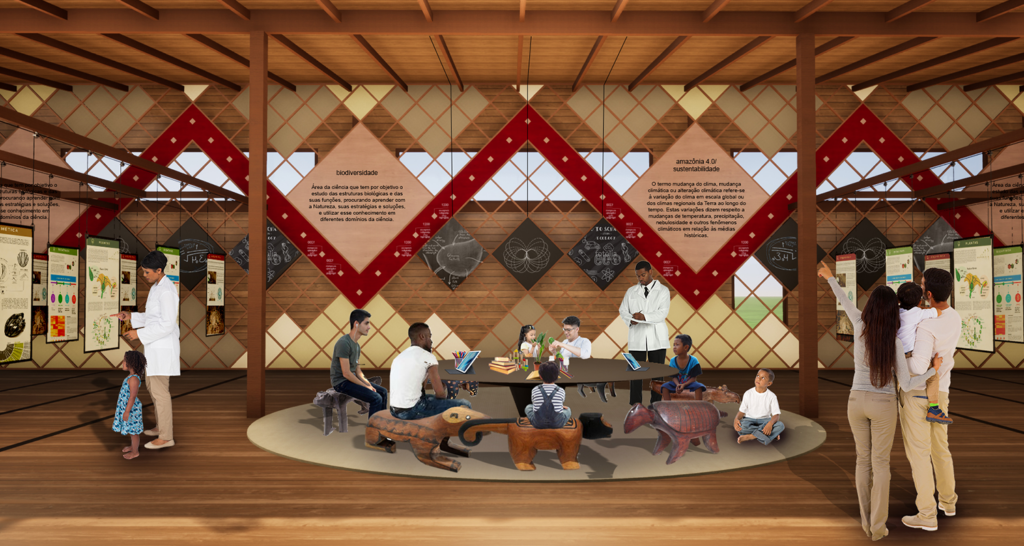Located in Vila Americana, in Belterra, Pará, the Amazon Science Museum (MuCA) is strategically located in the region with the greatest biodiversity in the country, considered the largest open-air laboratory on the planet. The museum holds a collection that gathers several native species of a 15-years collection by the Butantan Institute, supported by the Ama Brasil organization, in the Amazon. It is a biological heritage that was under the custody of the University of Amazon (Unama), which provided a subsidy for the qualification of MuCA as a museum by IBRAM – Brazilian Institute of Museums. The collection also holds data collected by the Large-scale Biosphere- Atmosphere Experiment in Amazonia (LBA) program, carried out by NASA. In partnership with the Federal University of Western Pará (UFOPA), the publication of this data will be made available to a better understanding of the impacts caused by human activities on the biosphere and their consequences on nature and biological heritage.
The Amazon Science Museum will also hold the largest living gene bank on the planet – a legacy of immeasurable importance for science and human health. Necessary for preserving the diversity of plants and fruits in the Amazon, creole seeds will be genetically sequenced for medicinal purposes, consolidating one of the most fundamental strategies for preventing diseases and attacks on the human immune system.
MuCA’s exhibition environment was designed by architect Marko Brajovic, from Atelier Marko Brajovic, who was also responsible for the museum’s first exhibition, Vida.The show presents several themes such as Biomimetics, Zoology, Bioactives, Plants, Archeology and Biosphere, combining local construction techniques, handicrafts, graphics and indigenous furniture. Content will be updated regularly to always bring innovation.
